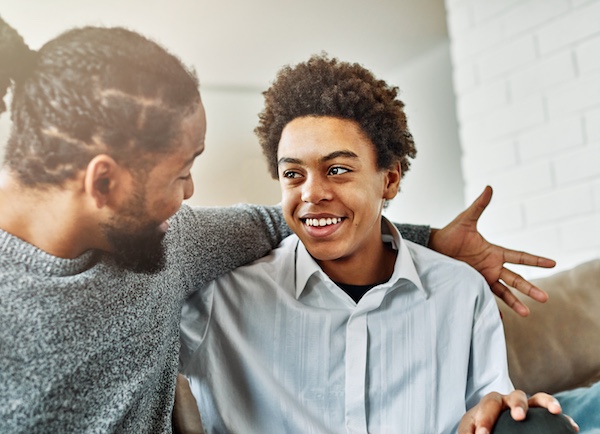Drag
Select
Call Now
5 tips for a happy holiday for the whole family
Parent

5 Tips for Everyone
Thanksgiving and December holidays are a time for getting together with family. However, family does not have to mean blood relatives. Studies have shown us that reaching out for support from loved ones including friends is correlated with a greater sense of well-being.
The same is very true for teens and kids. Connection and gratitude for others is an opportunity to help their mental well-being, and it’s also valuable to stop and think about their experience during the holidays. Kids and teens are frequently expected to go “with the flow” of the holiday plan. However, feeling a loss of control can put kids and teens at risk for something called the “holiday blues'' due to the stress of the season.
{{famcgchld="/blogcomponents"}}
In fact, the highest rate of child psychiatric hospitalizations occurs in the winter. There are ways to plan ahead to support your teen and child during this time to lessen the stress and promote feelings of positivity and gratitude. Here are our top five tips for a happy holiday for the whole family:
- Keep expectations low and focus on the current holiday: Many of us, including kids and teens, have positive memories of previous holidays, pre-pandemic, and expect the same of this year. However, it is important to focus on the present and not expect that the same things that have happened in the past will happen in the same way again. Things may be a little modified this year and that can be hard to reconcile with nostalgic memories. If you keep expectations low, you and your family are less likely to be disappointed.
- Stick to routines: Kids thrive on structure and routine. Having kids stay up late and have different mealtimes is a recipe for frustration and meltdowns. Try and stick to regular bedtimes and mealtimes whenever possible. A schedule as close to your everyday one as possible will ultimately result in everyone having a better time.
- Give teens some control: Teens are at a time of heightened emotional responses during their stage of development and a need to connect with peers. They also have a strong need for control. Allow them some time to celebrate with friends and have their own time for connection with their peers outside of family time. so they don’t miss the important parts.
- Take an electronic holiday: Not only is this a time for a holiday from school and work, but this is also a time for periodic electronic holidays. Pick at least one meal a day and put the electronics in another room, and silence them. That includes watches that buzz! Whatever it is, it can wait for 20 minutes. Without the distraction of the electronics, there is the opportunity to really connect with friends and family. Maybe play a game like “Roses and Thorns.” What is one good thing that has happened or that you are grateful for (a rose) and what is one thing that could be better (a thorn). Follow up with HOW that person is going to see it as an opportunity to change what is leading to the “thorn”.
- Go for a gratitude walk: Take a break from the food and football, and go for a gratitude walk with your child or as a large group. Walk around and spot the things that are beautiful or that you love and say “thanks.” This may include your child’s favorite slide at the local playground that makes them laugh, a tree that your child likes to climb, or your teen’s favorite coffee shop where you can sit and take a break from the hustle and bustle of life.
The holidays are a moment to stop and reflect. Not just on how you are doing as a parent, but also a time to connect with your child or teen. It is also a time to respect how they may be feeling and finding ways to help them through the holidays, which can be stressful for them as well. We hope these tips result in an even happier holiday for your family, and we’re always here to help if you need us.
Citations
1. Brown, G., & Greenfield, P. M. (2021). Staying connected during stay‐at‐home: Communication with family and friends and its association with well‐being. Human Behavior and Emerging Technologies, 3(1), 147-156.).
2. Graham, A., & Nutton, G. (2021). How are the kids doing?: Children's self-regulation, self-awareness and their wellbeing. Australian Educational Leader, 43(1), 24-28.)
3. Maciejewski, D. F., van Lier, P. A., Branje, S. J., Meeus, W. H., & Koot, H. M. (2017). A daily diary study on adolescent emotional experiences: Measurement invariance and developmental trajectories. Psychological Assessment, 29(1), 35.)




